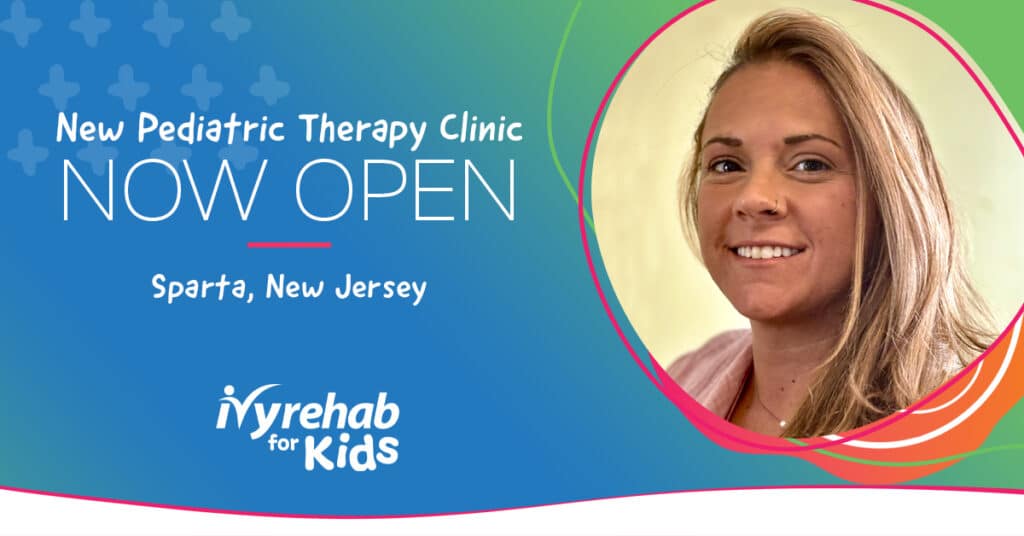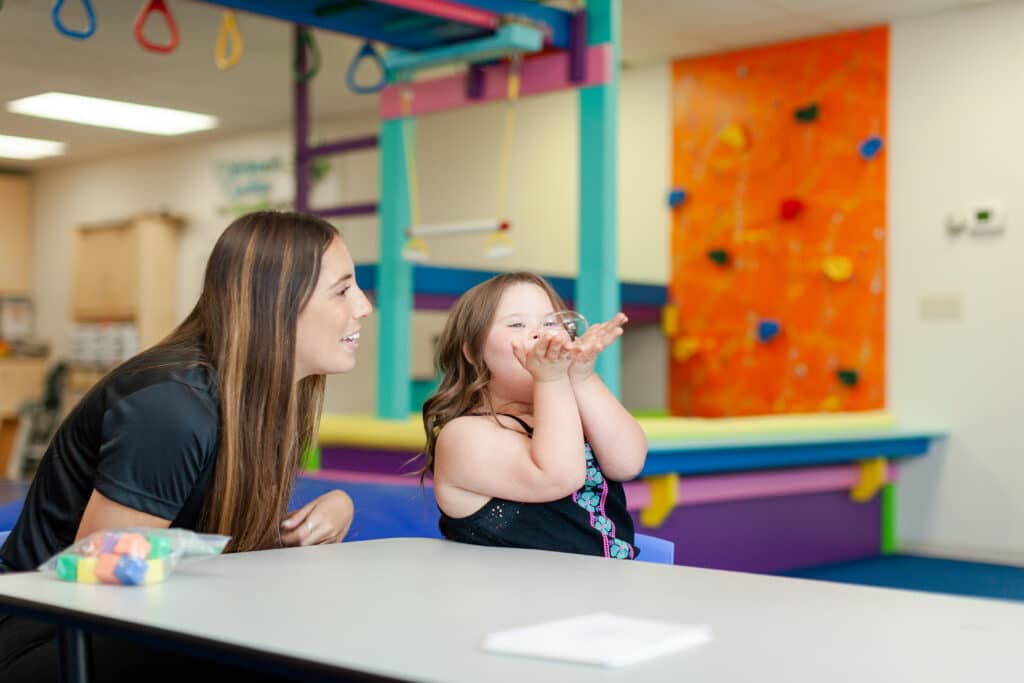Occupational Therapy (OT) helps adults and children participate to the fullest in meaningful tasks and activities in their daily lives. Pediatric occupational therapists are trained professionals who evaluate and assist children and adolescents in developing the skills and strategies they need to succeed in their home and community environments. Such therapists often work with children with Autism Spectrum Disorder (ASD). Pediatric occupational therapists can provide support so that each child can increase their independence, access their natural home and community environment, and participate in activities that are important to the child and their family. can be beneficial by integrating activities, practicing , and more.
How does occupational therapy help children who have Autism?
Skills and activities that occupational therapists can help children with Autism Spectrum Disorder achieve include, but are not limited to:
- Activities of daily living: brushing hair, bathing, dressing, grooming, self-feeding
- This can look like creating visual schedules and offering suggestions for adaptive clothing, feeding, and grooming products.
- Play and social interaction
- Including sharing, taking turns, starting, continuing, and ending conversations, and being a team player.
- Instrumental activities of daily living: grocery shopping, laundry, cooking, money management
- Providing support for completion of these tasks with visual or verbal reminders, offering solutions for sensory dysregulation while completing these tasks
- Executive functioning skills: organization, sequencing, working memory
- Using adaptive solutions such as visual timers or verbal reminders from virtual assistance technology
- Pre-academic skills: handwriting, scissor skills, coloring, drawing
- Use of adaptive tools such as adaptive paper, pencil grippers, loop scissors, pencil weights
- Sensory processing: assisting with regulating the sensory systems to promote optimal levels of arousal
- Creating sensory diets to utilize throughout the day to help maintain regulation. Some examples are:
- Auditory: use of headphones when going to the grocery store to block out some of the external noise
- Visual: use of sunglasses inside to decrease the harsh lighting in a room or store or use lamps versus overhead lights in the home or bedroom.
- Oral: use of an oral chewy or strong flavor of gum to help avoid putting toys and other non-food objects in the mouth.
- Tactile: providing a fidget to keep hands busy when trying to listen or talk to another person. Another option would be to offer tactile-friendly clothing.
- Creating sensory diets to utilize throughout the day to help maintain regulation. Some examples are:
- Safety awareness: in the home and community
- Occupational therapists can provide safety tips and strategies for parents to implement in parking lots, stores, around stoves, and when using knives.
- Self-feeding: To increase food variety for picky eaters and assist kids who are hypersensitive or hyposensitive to various textures (wet, slimy, crunchy).
- Occupational therapists use multiple approaches to expand food diets and repertoires, often engaging the child in food-based play.
Every integrated and skill can be specific for each individual.
Can occupational therapists diagnose Autism?
Within the occupational therapy scope of practice, Occupational therapists cannot diagnose Autism. Please speak with your pediatrician if you believe your child has Autism or would like your child to be tested for Autism. Your pediatrician can then provide you with the best resources for testing. Your child does not have to be diagnosed with Autism to be evaluated and treated by an occupational therapist. A common misconception is the difference between vs , for example. An service can also be provided for an individual with a even if they don’t have .
Occupational Therapists have a master’s or doctorate degree and have passed a national certification exam: The National Board for Certification in Occupational Therapy, NBCOT. Additionally, Occupational therapists must obtain a license in their respective state of practice.
Therapy services can also be provided by a Certified Occupational Therapy Assistant (COTA). This individual has an associate’s or bachelor’s degree and follows the treatment plan created by a certified OT. The occupational therapist and COTA work closely together to provide the best treatment for each child.
What kind of therapy is best for Children with Autism?
Depending on each child, therapy types can vary. Because each child is unique, so will be the therapy they need. There are many different therapies available depending on your child’s needs. A child on the Autism Spectrum may require different therapies at various times, including occupational therapy, speech therapy, physical therapy, and applied behavior analysis (ABA) therapy. It is not uncommon for a child with Autism to be treated by one or all of these professions. This means they will work together in session with your child to achieve the highest level of independence in the skills each discipline is working on. For example, an occupational therapist and a speech therapist may work together to help a child on the spectrum obtain their optimal level of arousal to engage and communicate in an age-appropriate play task with a peer. So, the in each will differ based on a ‘s needs.
Occupational Therapy
Occupational therapy is not “a one size fits all.” Pediatric occupational therapy is highly individualized. Therefore, some children with Autism may only need occupational therapy to work on independence in activities of daily living and instrumental activities of daily living.
Treatment sessions are usually half an hour, one to two times a week. A typical treatment session may look like starting in the sensory gym on a swing to help regulate the child or completing a sensory-motor obstacle course to assist with motor planning and body coordination. After the sensory gym, the session may transition to an individualized treatment room to work on handwriting or practice tying shoes. This may include working with thera-putty to warm up the small muscles in the hand and then using adaptive writing paper to help with letter formation, spacing, size, and placement. Handwriting is an essential skill for academics and independence. It is instrumental in activities of daily living, including filling out job applications, completing forms for doctor visits, and signing their name for cards, lists, or records.
Speech Therapy
Children on the Autism Spectrum may also benefit from attending speech therapy. Speech-language therapy can focus on specific challenges with language and communication. Speech-language therapy can help people with Autism improve and increase their verbal, nonverbal, and social communication skills. Goals for speech therapy include increasing independence in communication in the home and community settings.
Applied Behavior Analysis
Applied Behavior Analysis (ABA) therapy is also another type of therapy for children who have Autism Spectrum Disorder. ABA therapy looks at understanding how behavior works in real situations. The main goal of Applied Behavior Analysis is to increase helpful behaviors and decrease behaviors that are self-harming, dangerous, or affect learning.
Physical Therapy
Lastly, physical therapy is another type of therapy that children on the Autism Spectrum can benefit from. Many times, children on the Autism Spectrum have delayed gross motor milestones. These milestones involve large muscles and can include jumping, running, throwing, and overall coordination and balance for play and social interaction.
How Ivy Rehab for Kids Can help
If you find your child has difficulty engaging or participating in age-appropriate activities of daily living or instrumental activities, please consult your pediatrician. They can provide an occupational therapy referral. Ivy Rehab for Kids offers occupational therapy, physical therapy, speech therapy, and applied behavior analysis services in select locations. Please call your local Ivy Rehab for Kids if you have any questions about the process of receiving an occupational therapy referral, setting up an evaluation, and starting the treatment process.
Article By: Brittany Bosley, OTR/L, CIMI-2
Brittany began her Occupational Therapy career six years ago. Brittany loves working with the pediatric population and believes in the importance of independence through play. She currently specializes in feeding, sensory processing, and infant massage. Brittany enjoys working with children of all ages to reach their full potential. She currently treats patients at Ivy Rehab for Kids in Zion Crossroads, VA.





